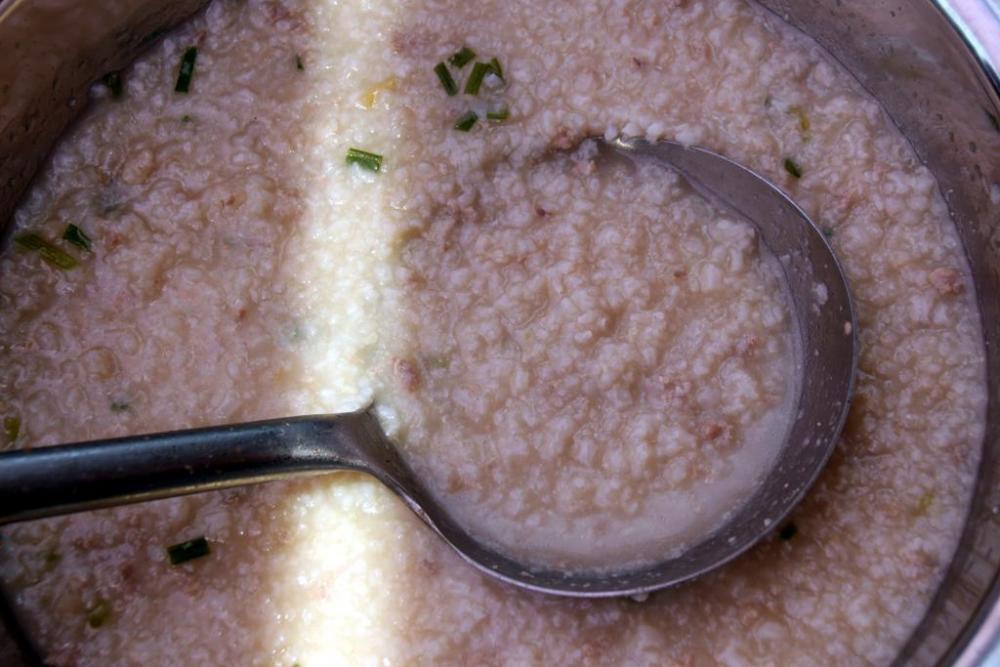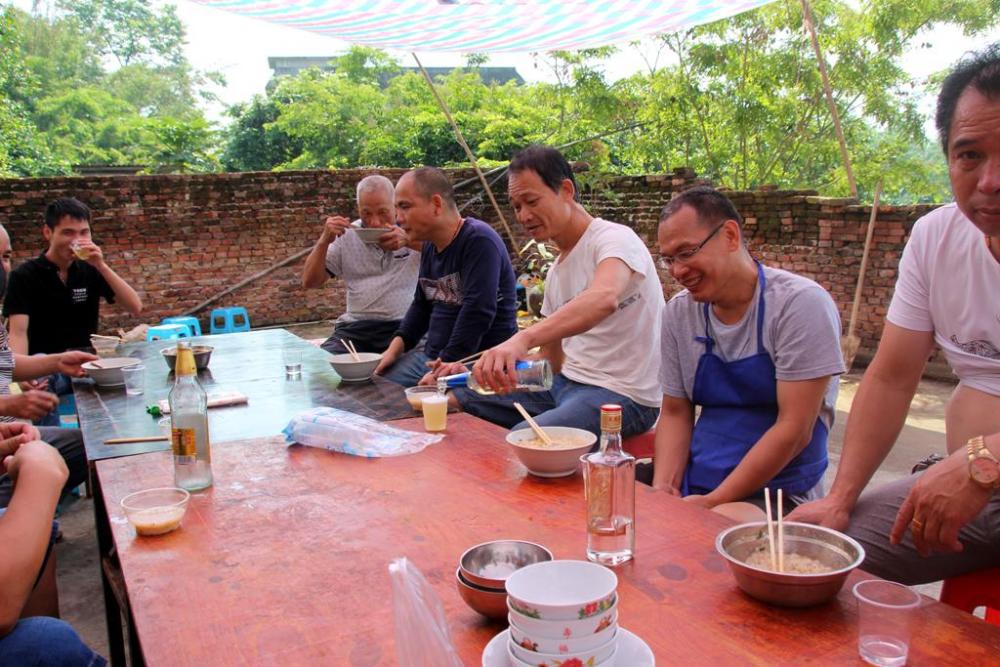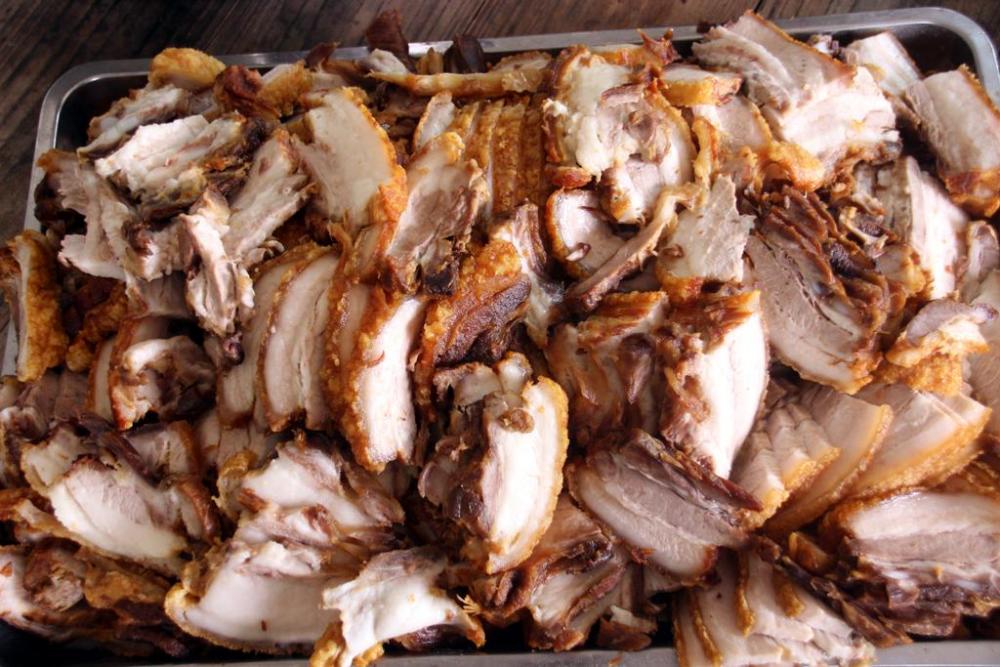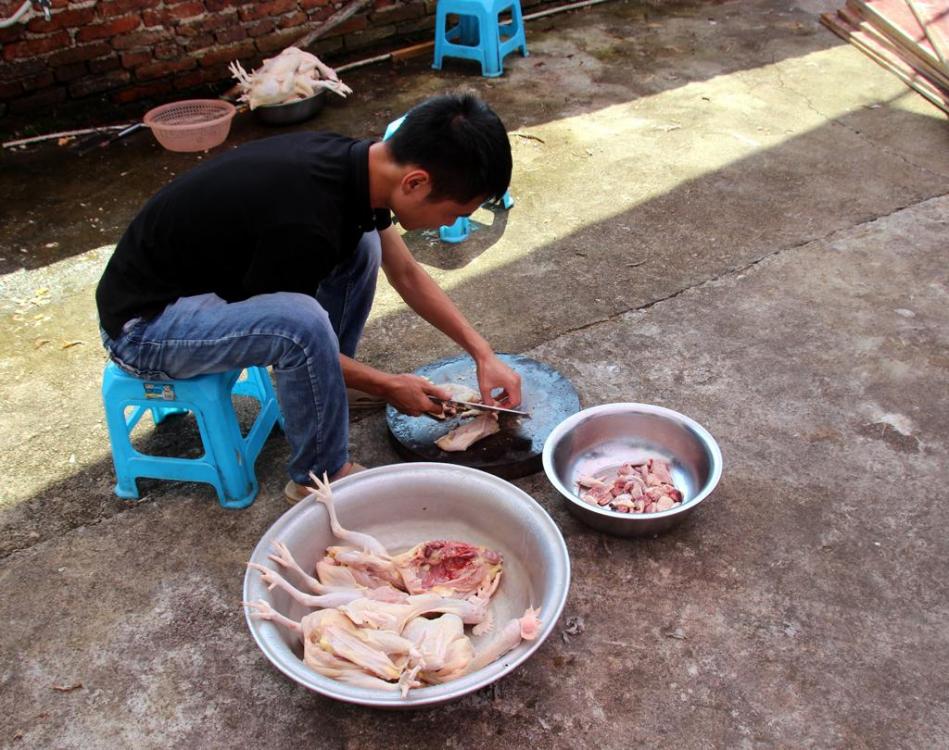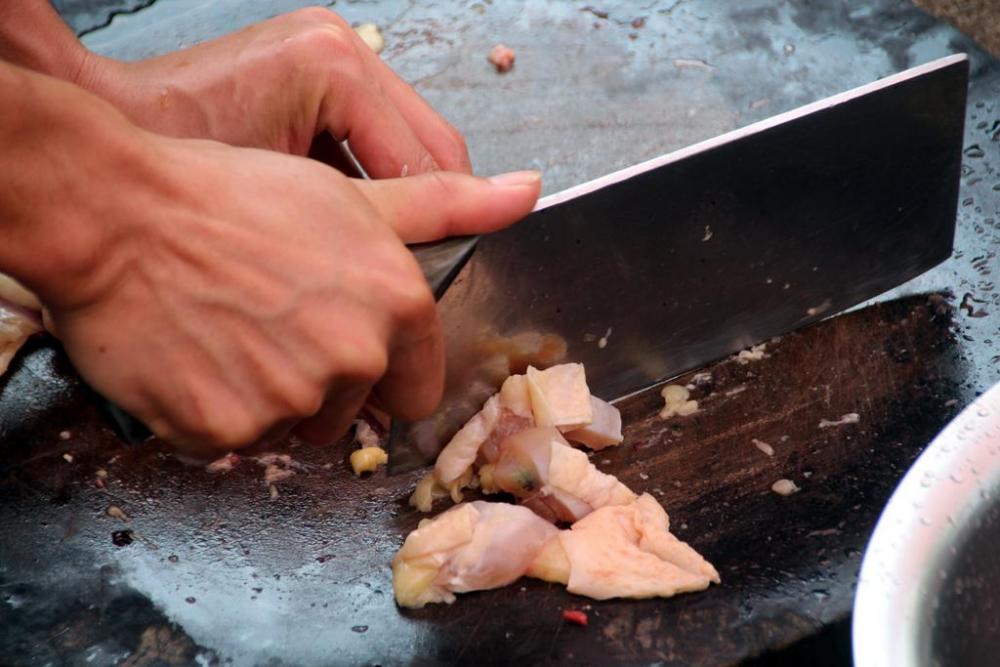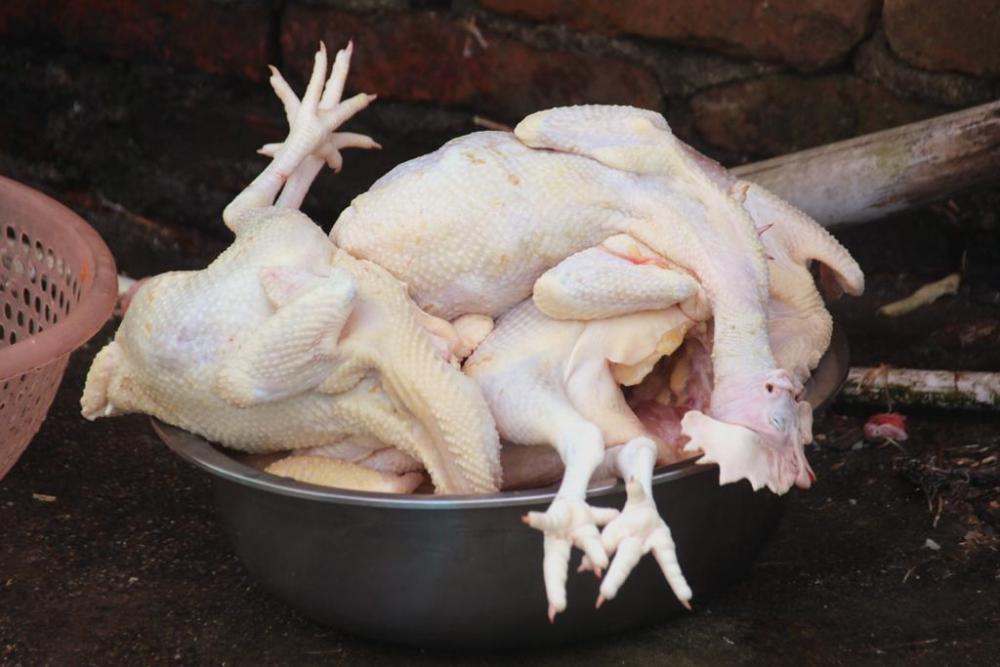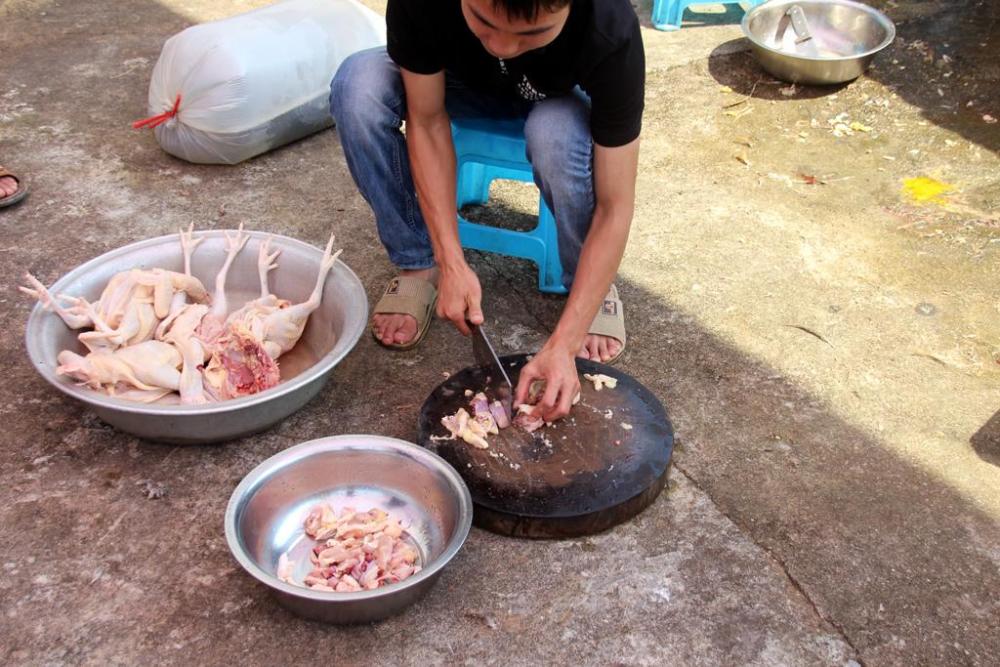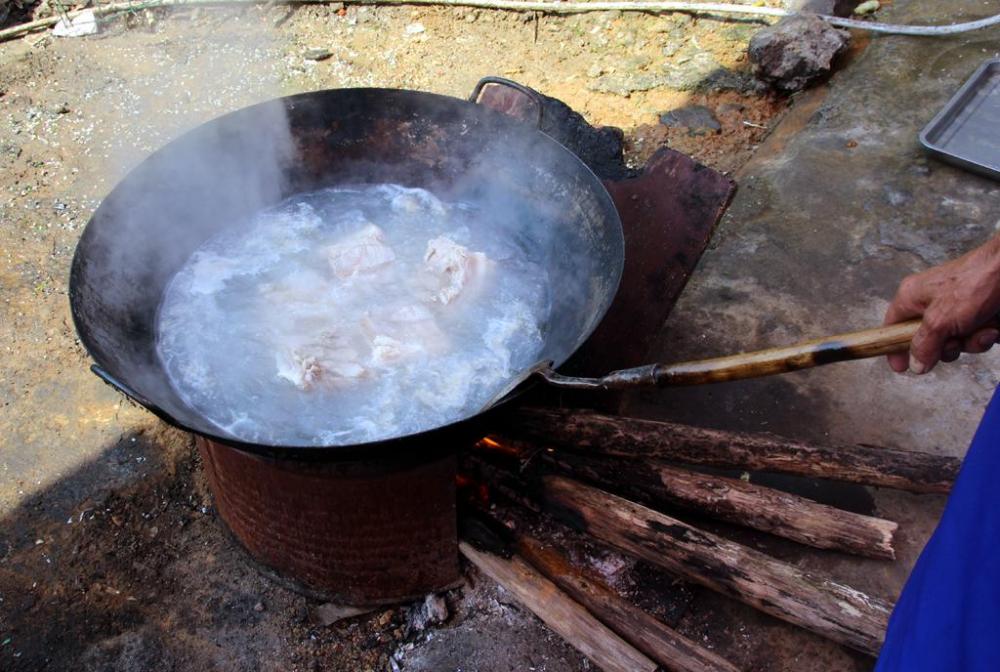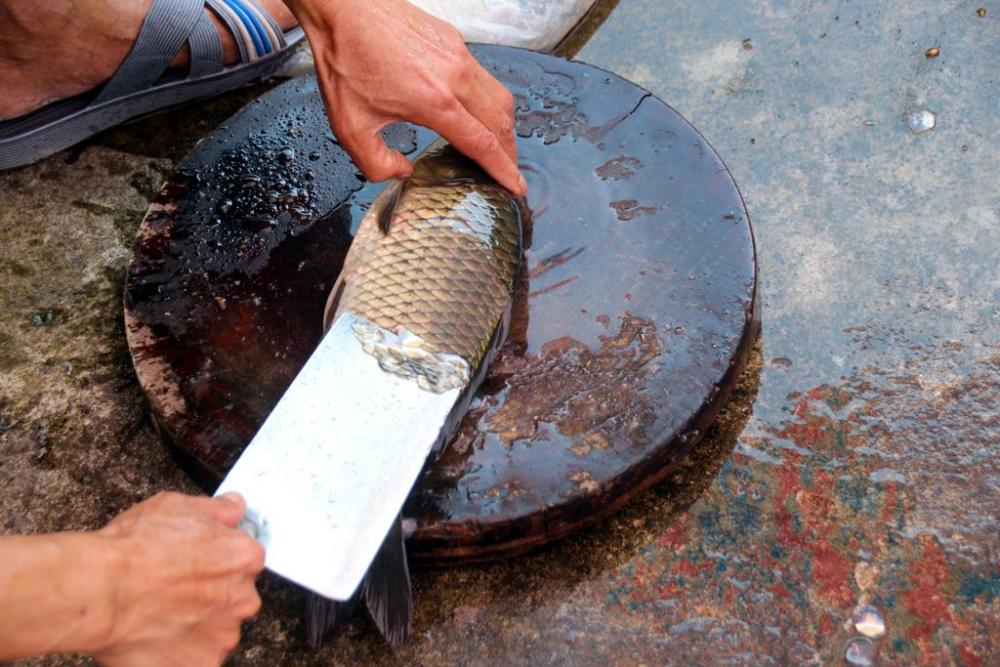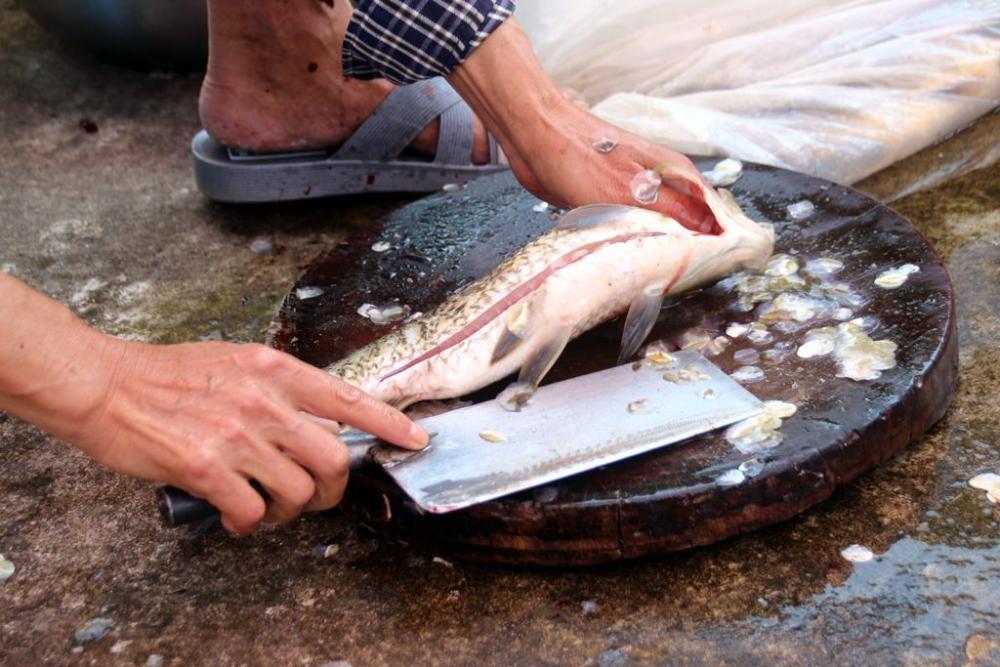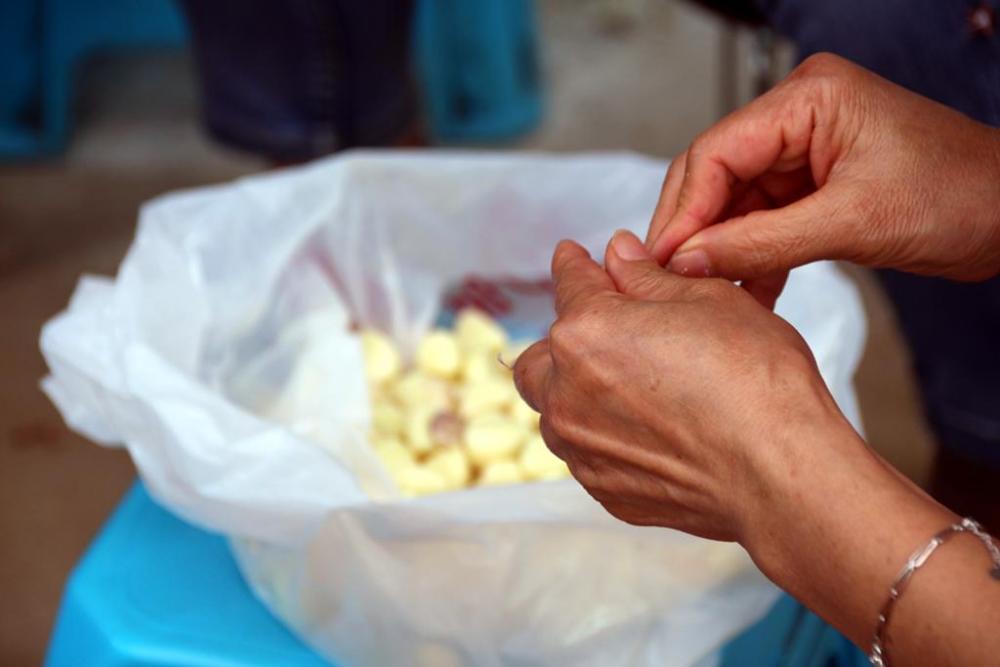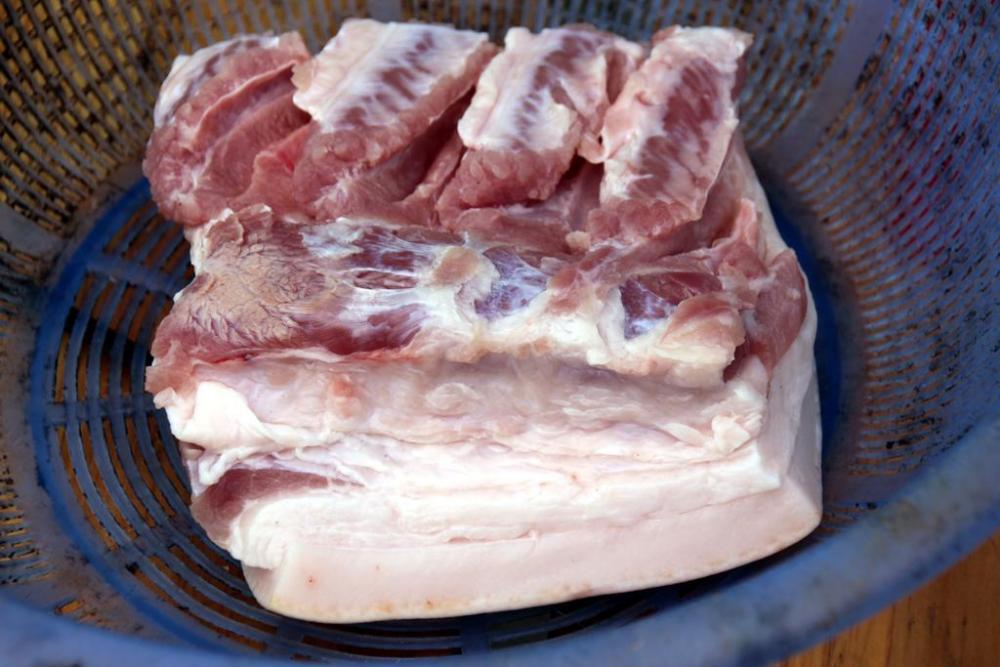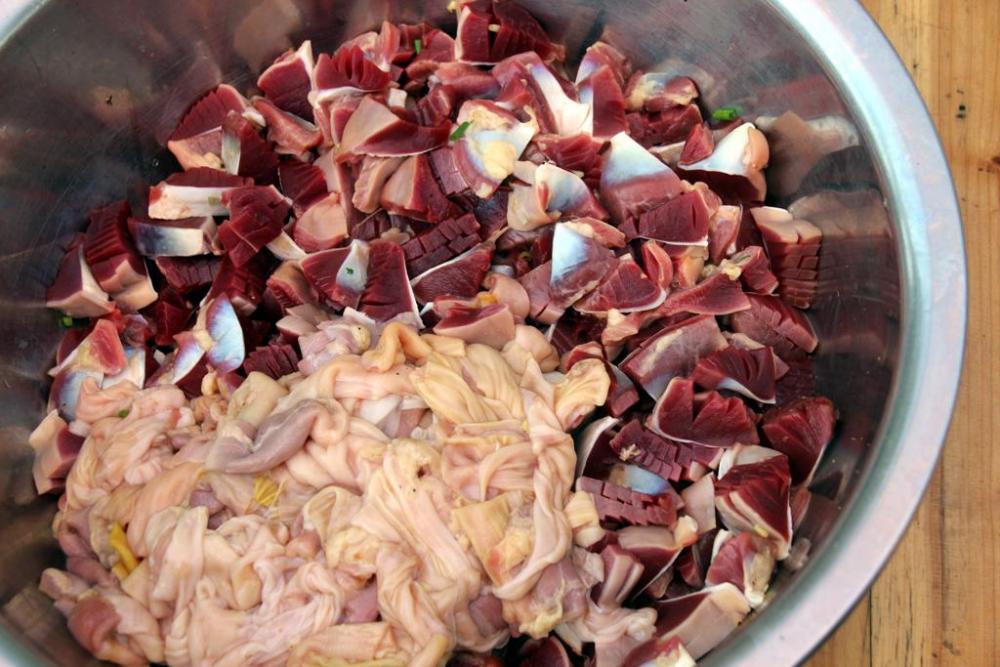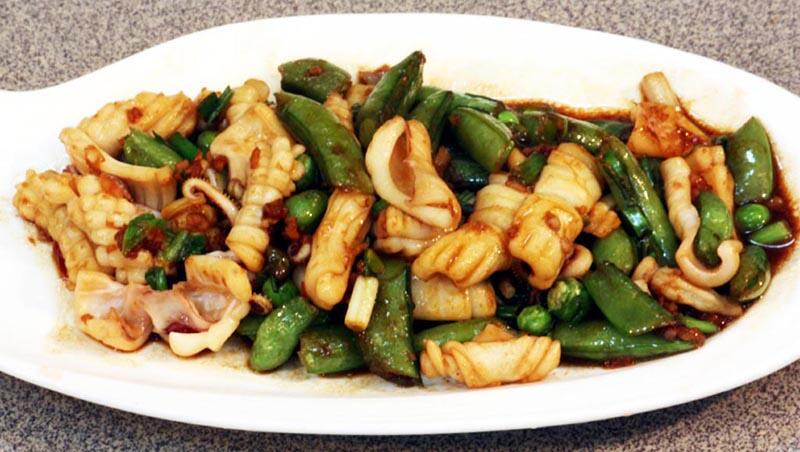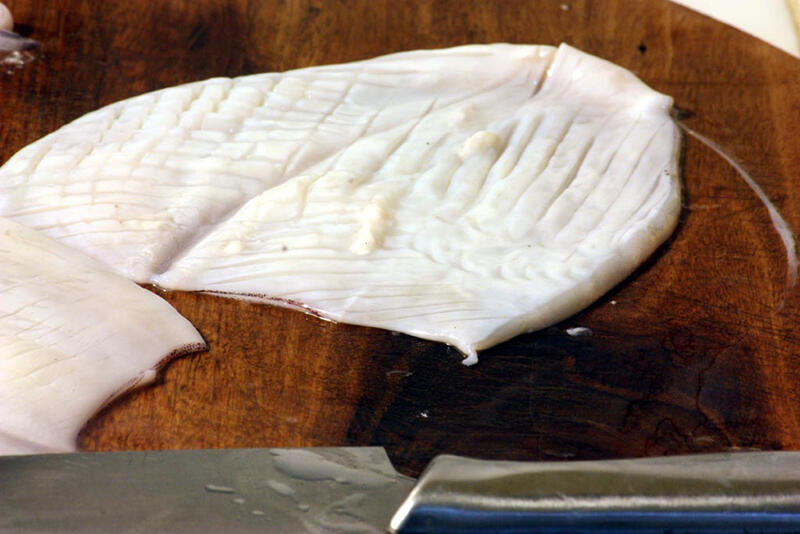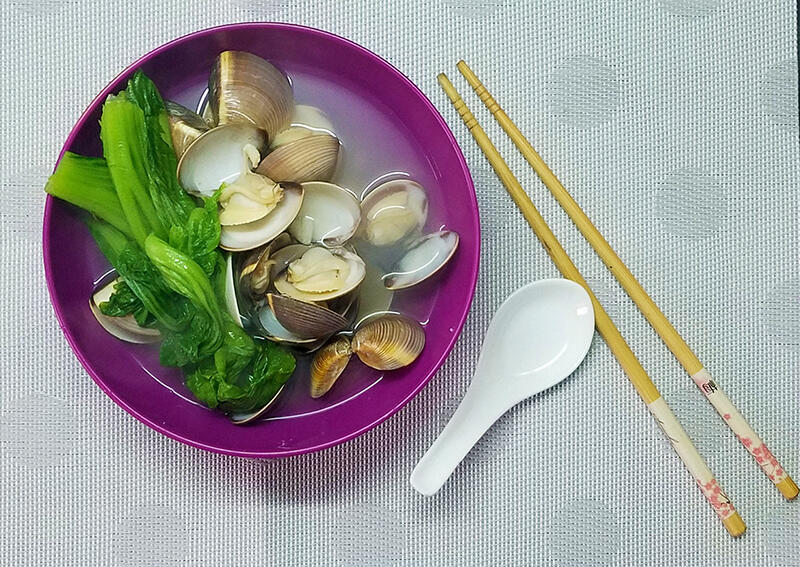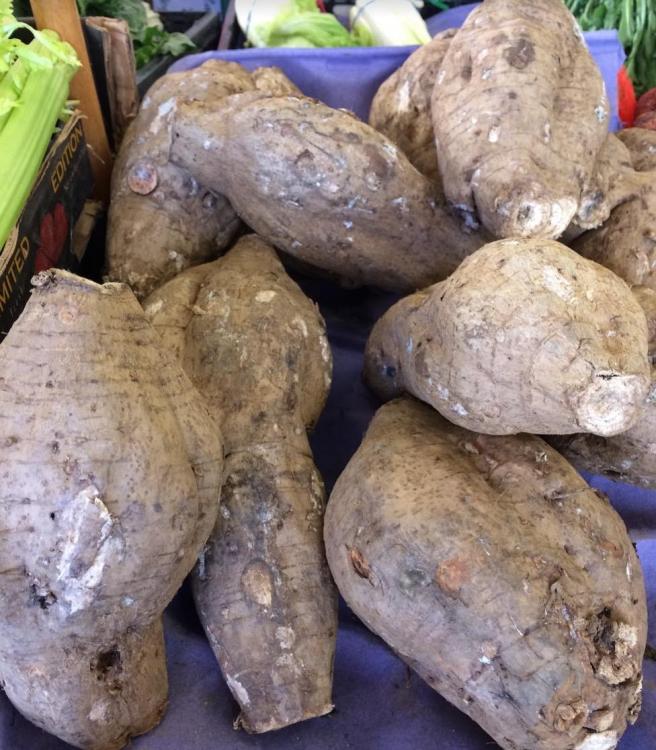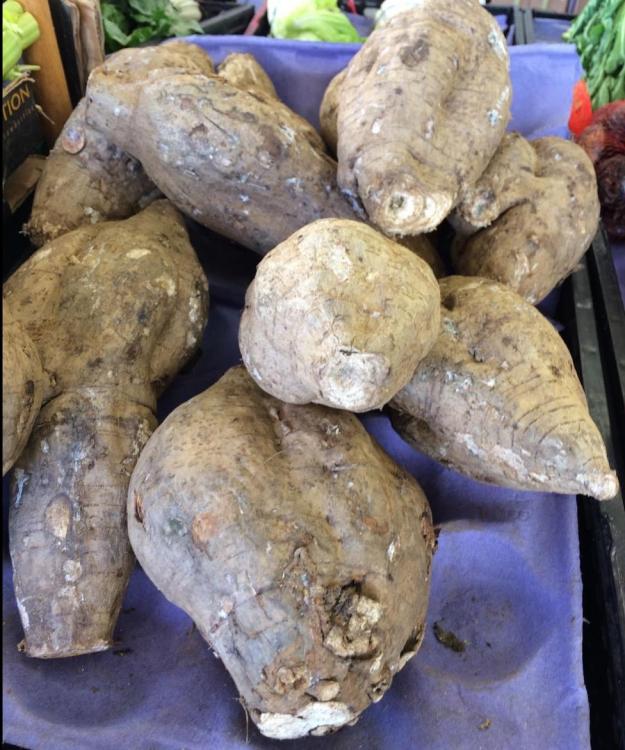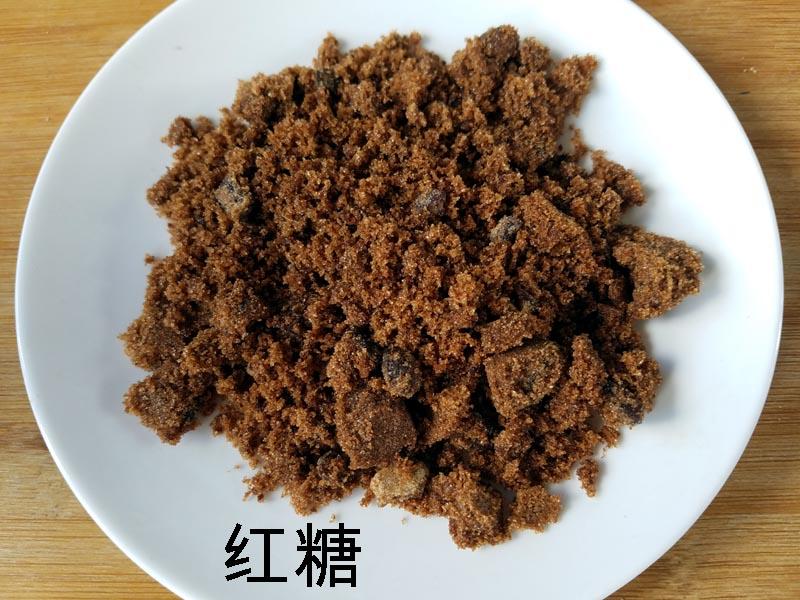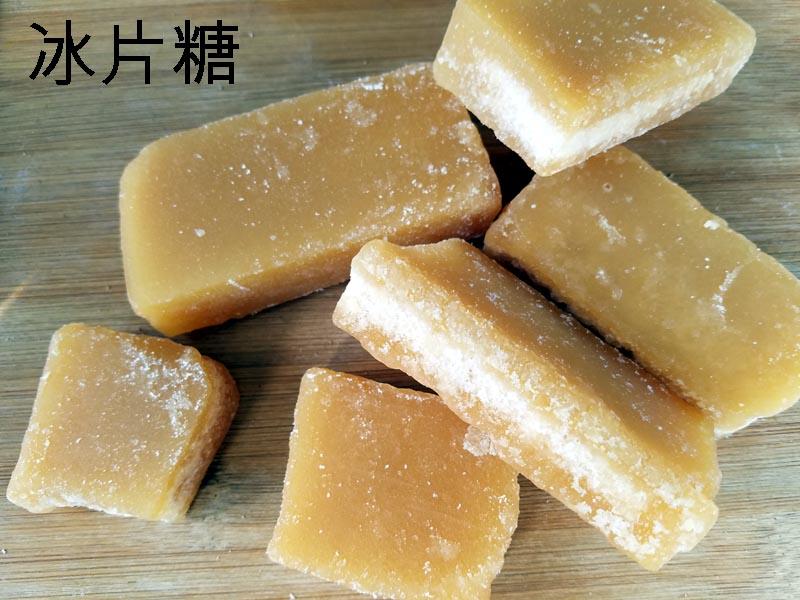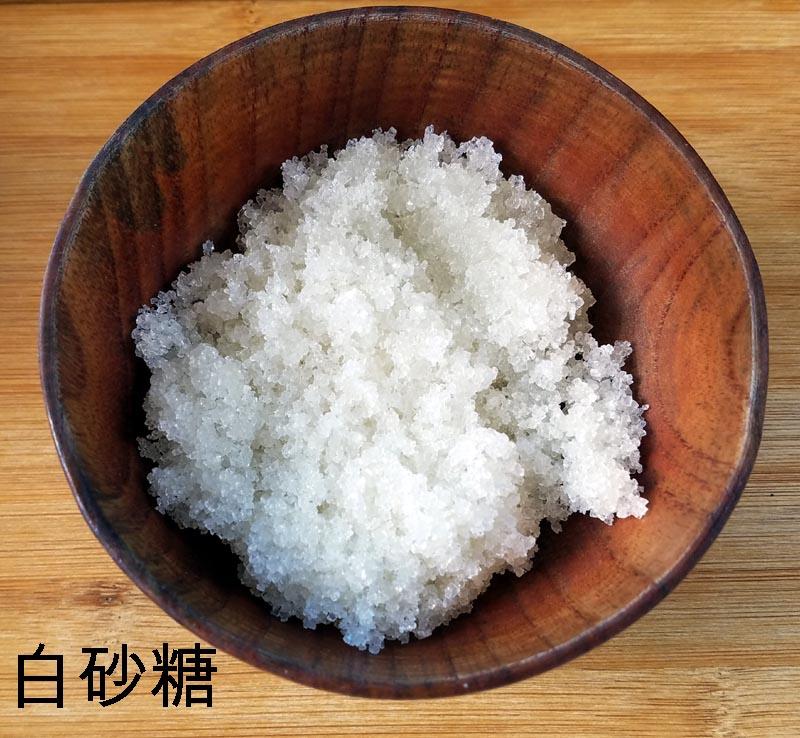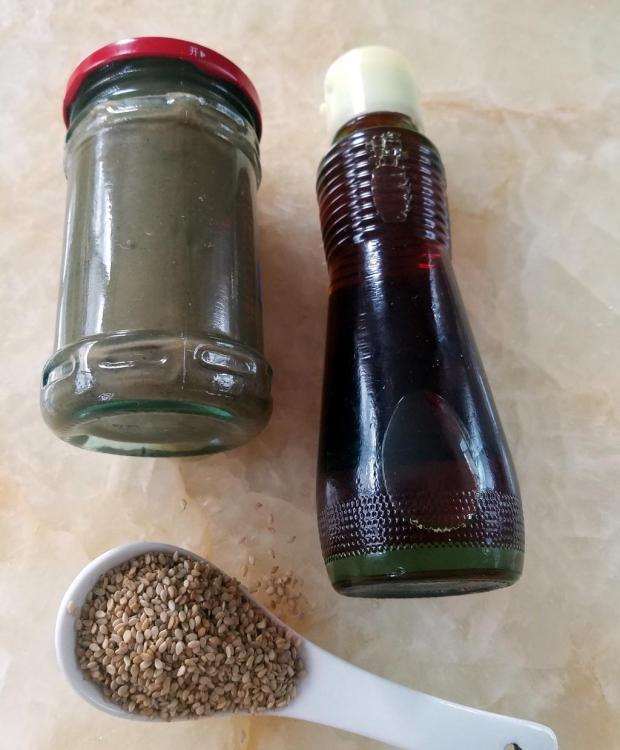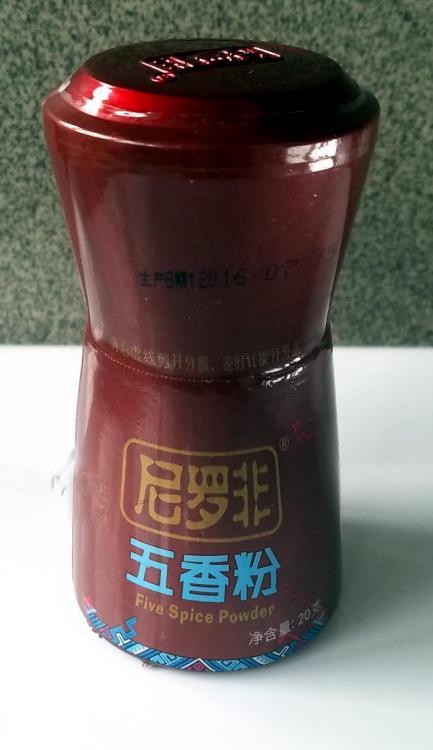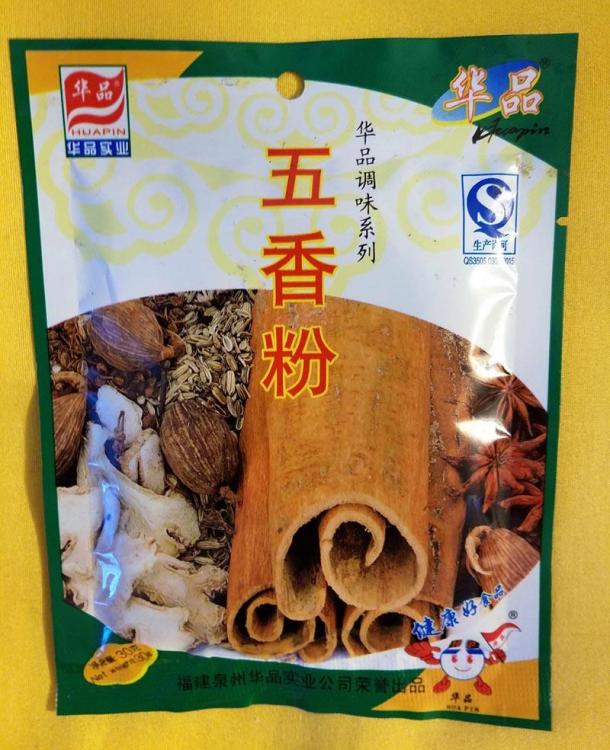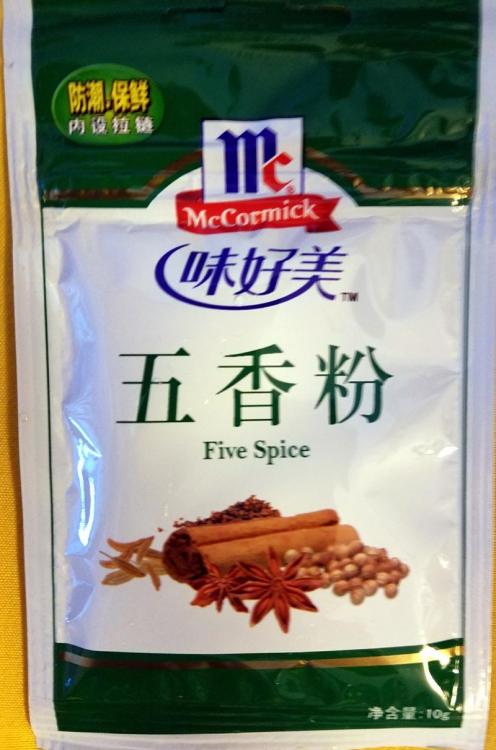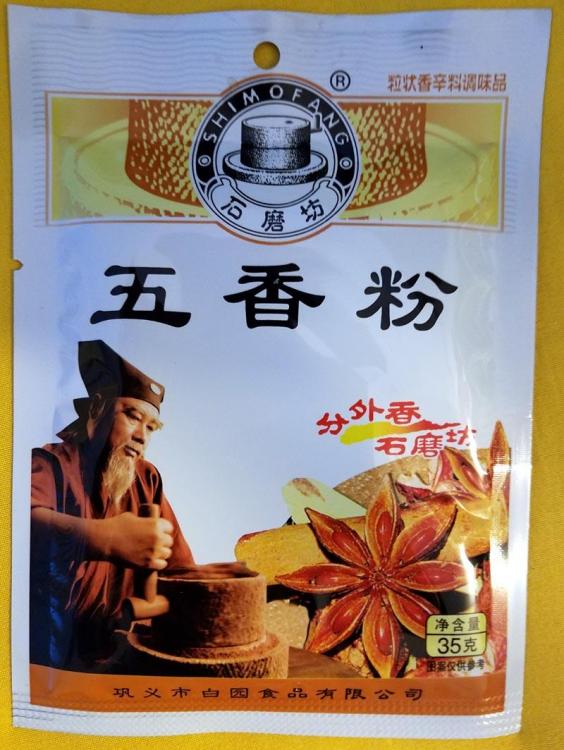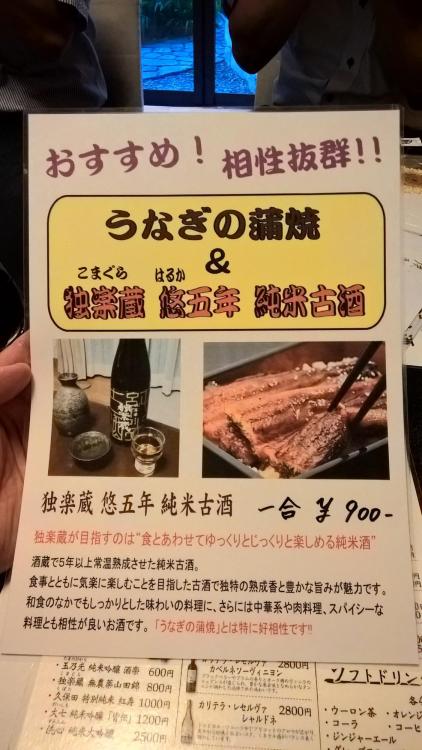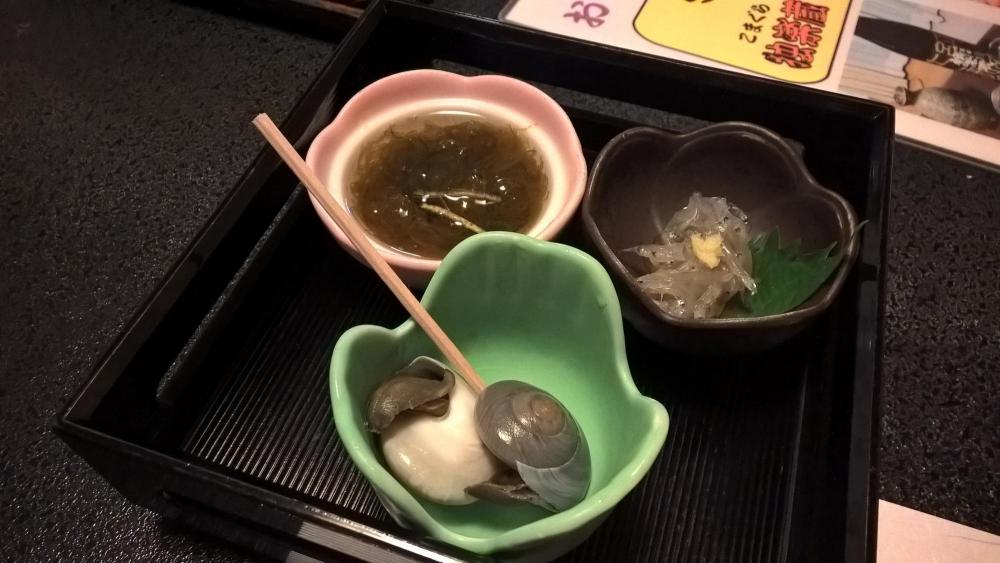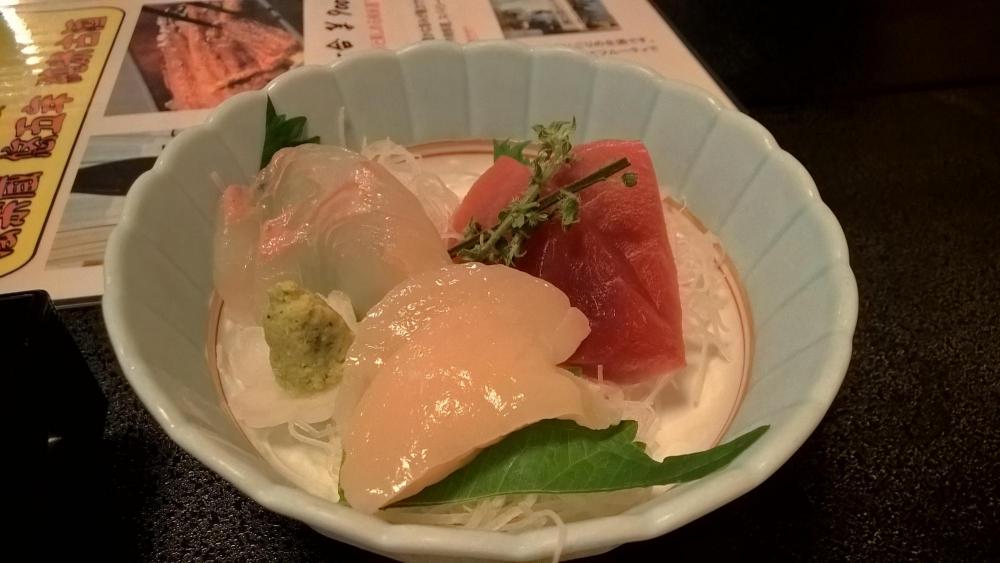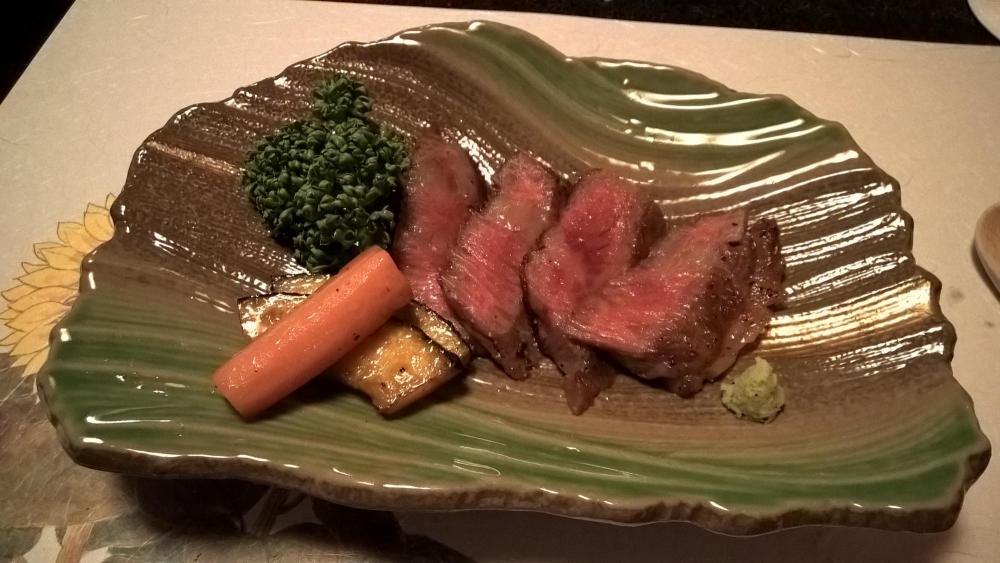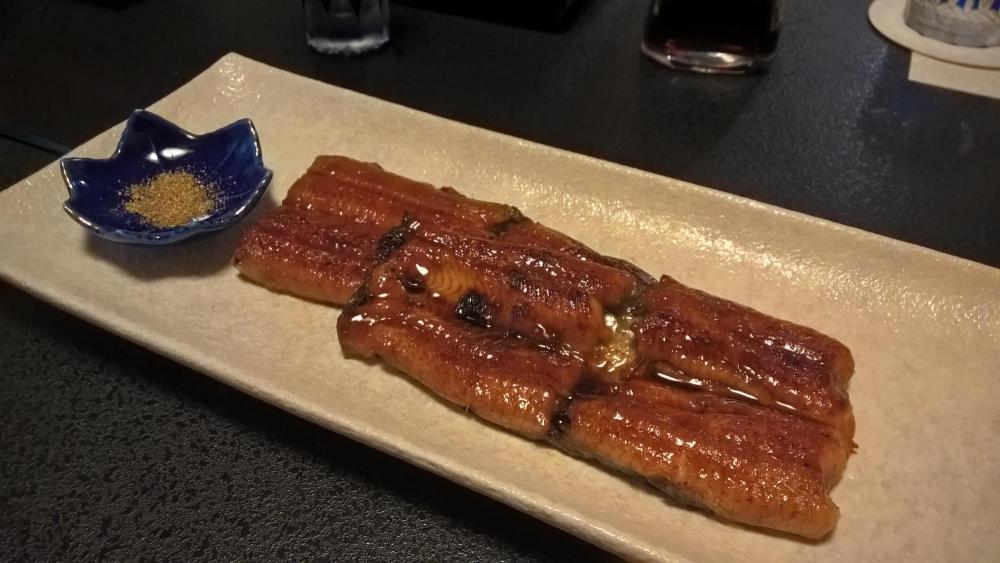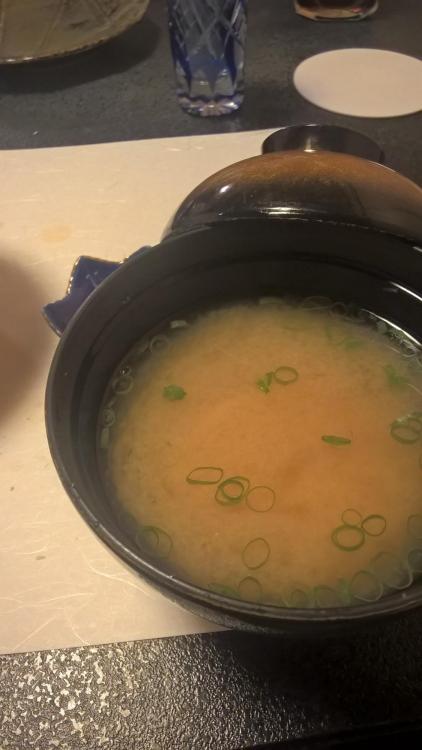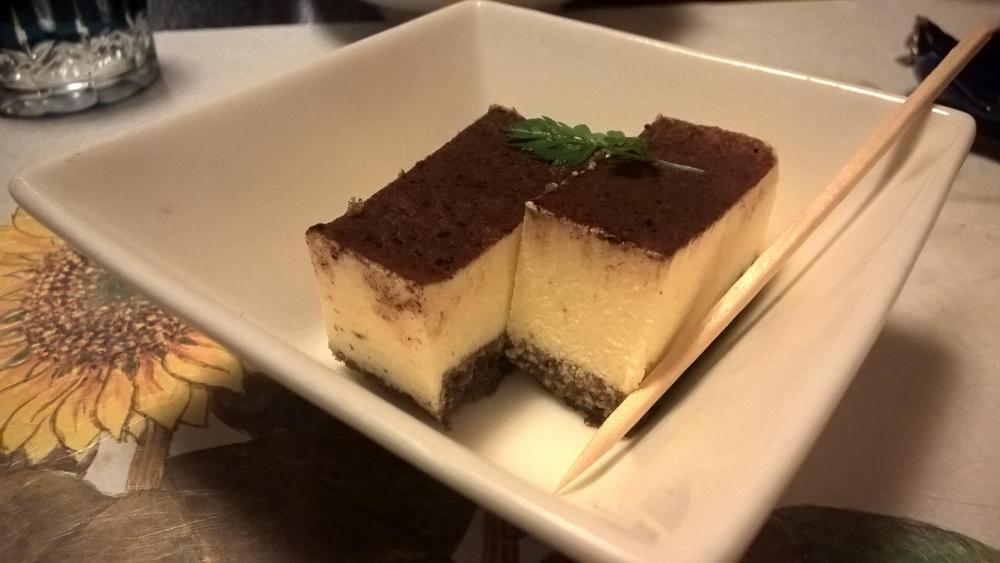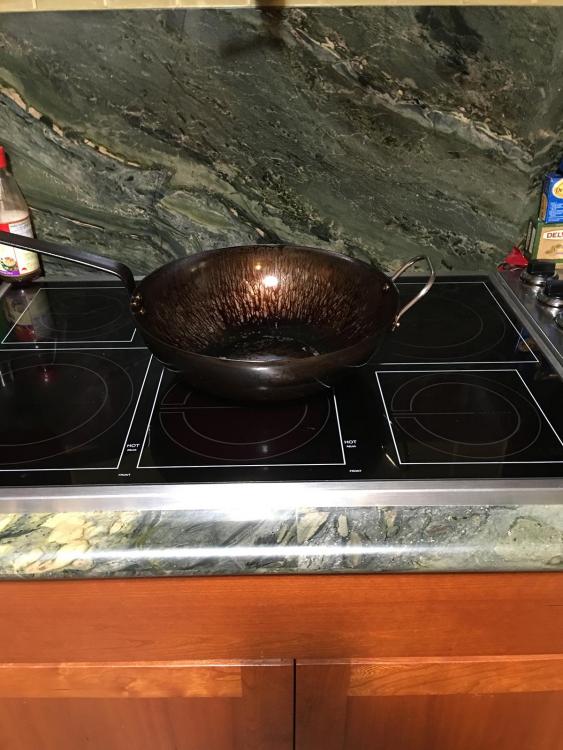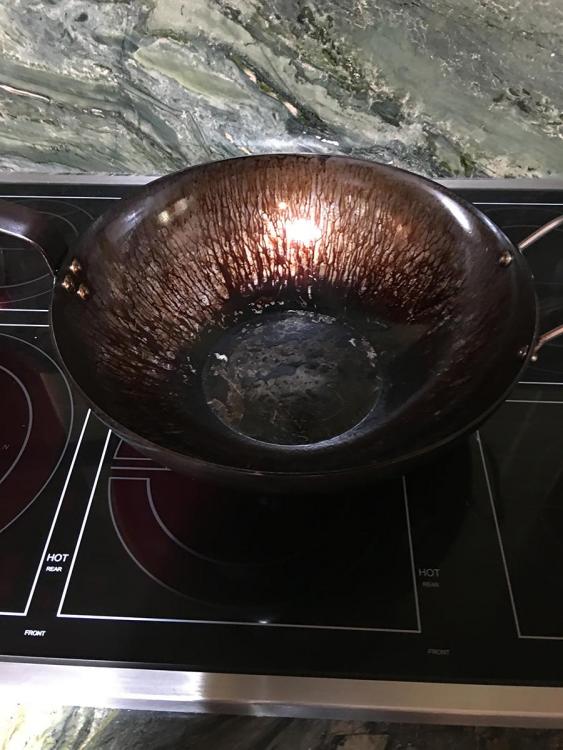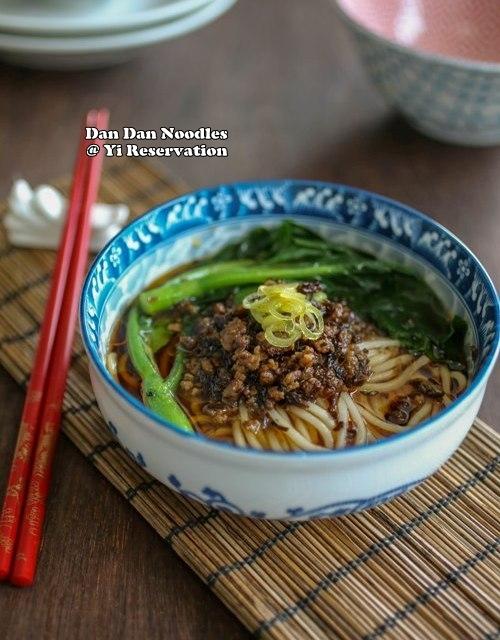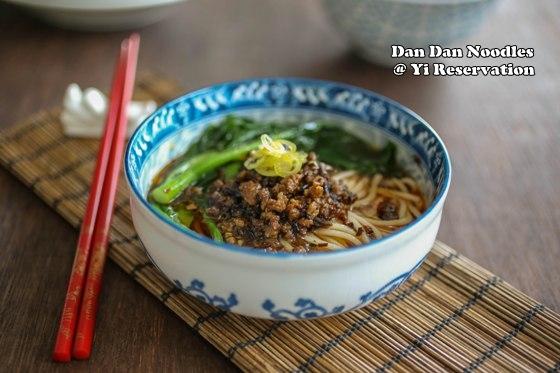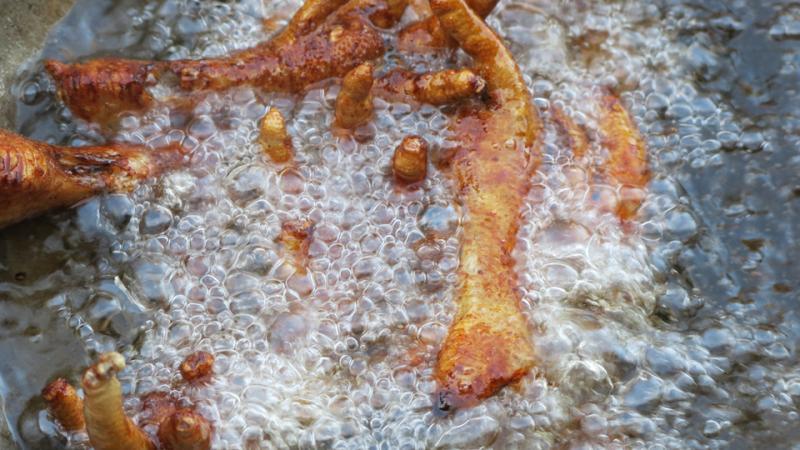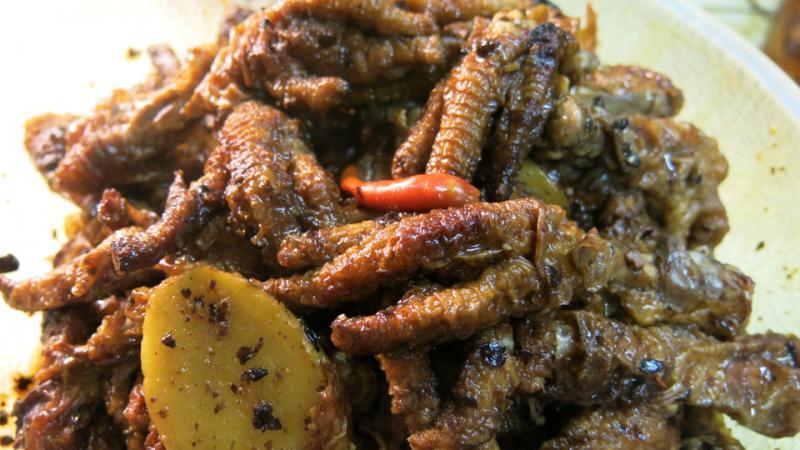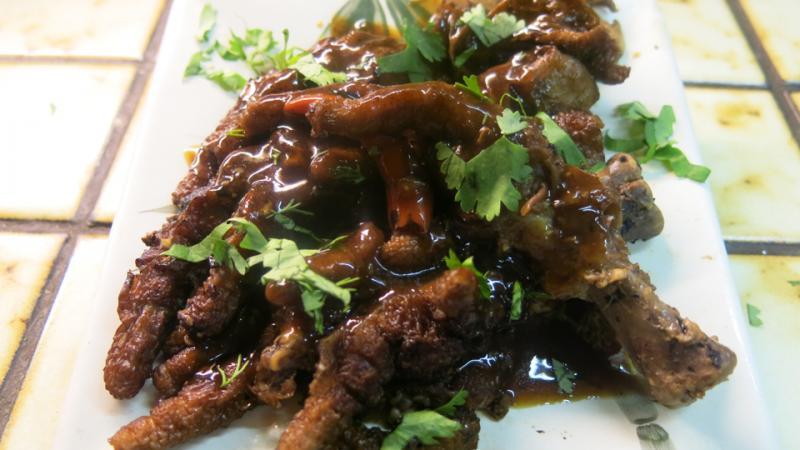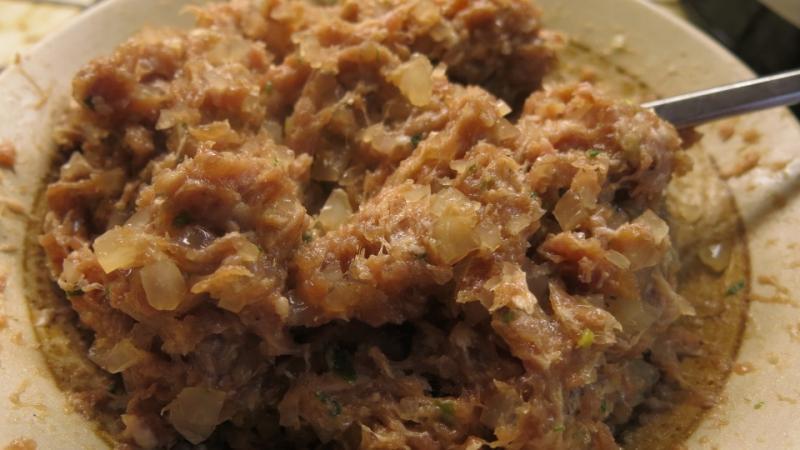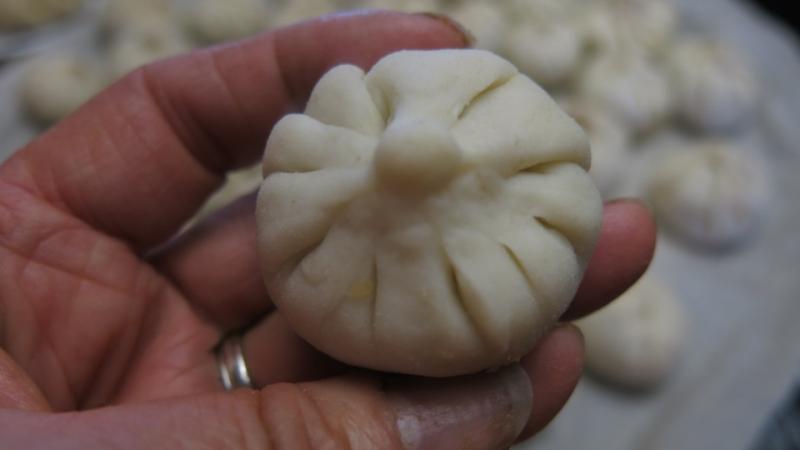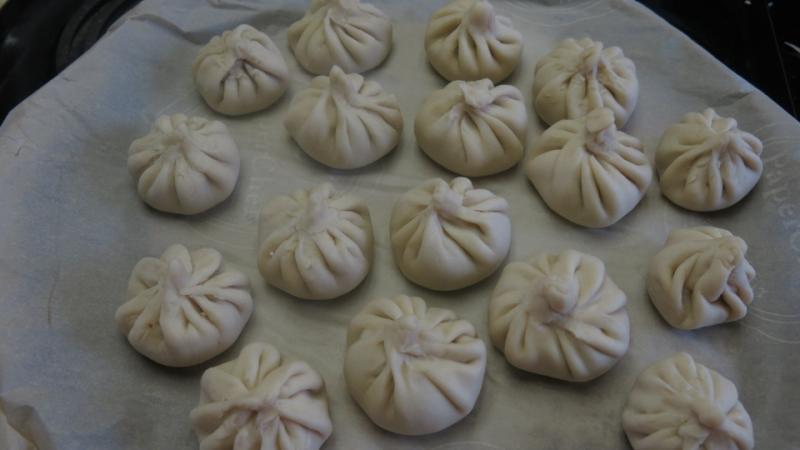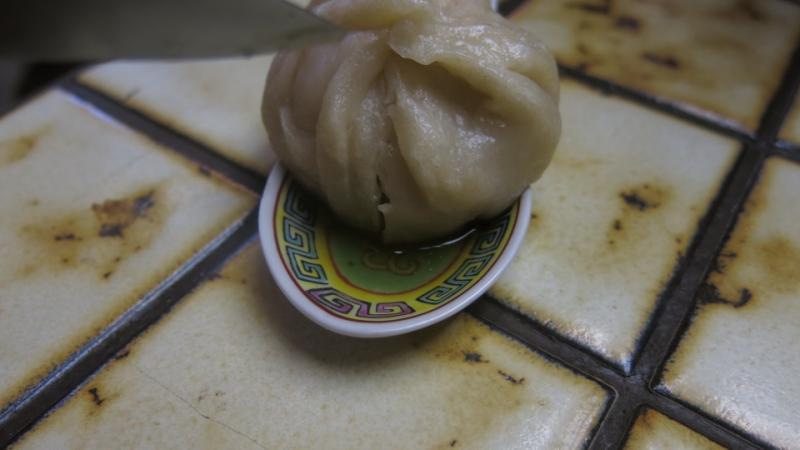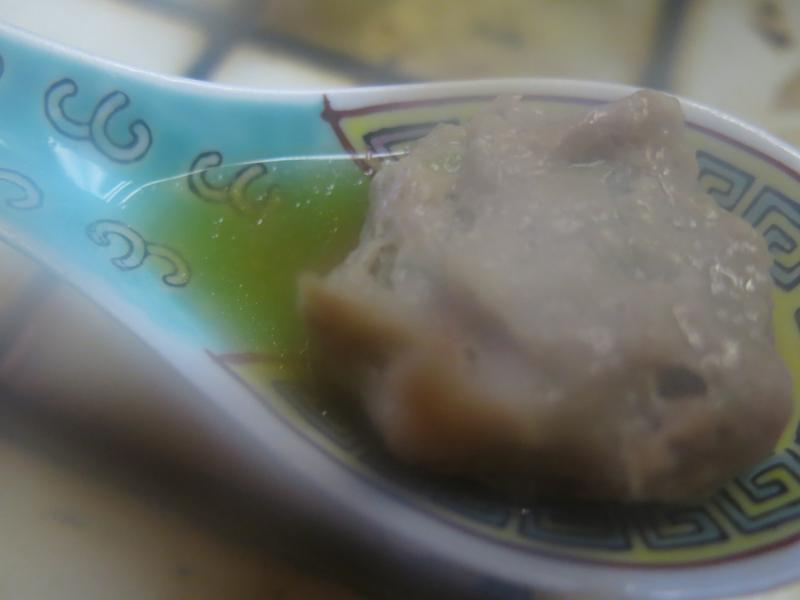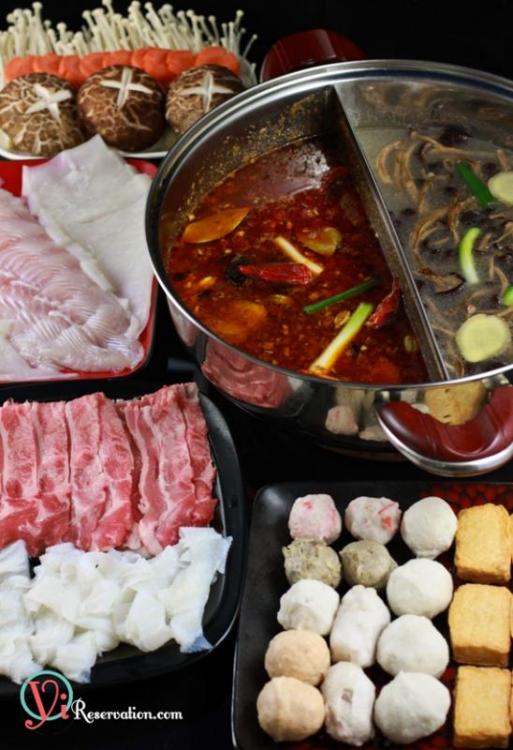Search the Community
Showing results for tags 'Chinese'.
-
I was recently asked by a friend to give a talk to a group of around 30 first-year students in a local college - all girls. The students were allowed to present me with a range of topics to choose from. To my joy, No. 1 was food! They wanted to know what is different between western and Chinese food. Big topic! Anyway I did my best to explain, illustrate etc. I even gave each student a home made Scotch egg! Which amused them immensely. Later, my friend asked each of them to write out (in English) a recipe for their favourite Chinese dish. She has passed these on to me with permission to use them as I wish. I will post a few of the better / more interesting ones over the next few days. I have not edited their language, so please be tolerant and remember that for many of these students, English is their third or fourth language. Chinese isn't even their first! I have obscured some personal details. First up: Tomato, egg noodles. Time: 10 minutes Yield: 1 serving For the noodle: 1 tomato 2 egg 5 spring onions For the sauce: 1 teaspoon sesame oil 1 tablespoon sugar ½ teaspoon salt Method: 1. The pot boil water. At that same time you can do something else. 2. Diced tomato. Egg into the bowl. add salt and sugar mixed. Onion cut section. 3. Boiled noodles with water and cook for about 5 minutes. 4. Heat wok put oil, add eggs, stir fry until cooked. Another pot, garlic stir fry the tomato. 5. add some water to boil, add salt, soy sauce, add egg 6. The tomato and egg sauce over noodle, spring onion sprinkled even better. More soon.
-
I think you’ll see in a moment why I didn’t just post this on the Lunch! topic. It was exceptional. An epic and it has been an epic sorting through the 634 photographs I took in about three hours. If I counted correctly, there are only 111 here. Like so many things, it came out of the blue. I was kind of aware that there was a Chinese holiday this week, but being self-semi-employed I am often a man of leisure and the holidays make little impact on my life. This one is in celebration of the Dragon Boat Festival (端午节 duān wǔ jié) and although it features nothing boat-like, it was festive and there is a dragon link. It started with this invitation which appeared on my WeChat (Chinese social media) account. Longtan (龙潭 lóng tán) means Dragon’s Pool and is more of a hamlet. It is about an hour’s drive north of Liuzhou city. I’d never heard of it and certainly never been there, but a friend of a friend had decided that a “foreign friend” would add just the right note to the planned event. I’ve seen many pictures of such “Long Table“ lunches and even attended one before – but this one was different and I was delighted to be invited. So, I was picked up outside my city centre home at 9 am and the adventure began. We arrived at the village at 9:45 to be met by the friend in question. He led me to what appeared to be the head man’s home, outside which was a large courtyard with a few men sitting at a trestle table seemingly finishing a breakfast of hot, meaty rice porridge washed down with beer or rice wine. I was offered a bowl of the porridge, but declined the beer or rice wine in favour of a cup of tea. After downing that and making introductions etc, I was left to wander around on my own watching all the activity. Rice Porridge Here goes. I'm posting these mostly in the order they were taken, in order to give some sense of how the event progressed. These two men were the undisputed kings of this venture, organising everyone, checking every detail, instructing less experienced volunteers etc. It was obvious these men had been working since the early hours. and their breakfast was a break in their toil. There were piles of still steaming cooked pork belly in containers all over the courtyard. Some of this had been the meat in the rice porridge, I learned. This young lad had been set to chopping chicken. Not one chicken! Dozens. Entrails, insides and fat were all carefully preserved. In the meantime, the two masters continued boiling their lumps of pork belly. This they refer to as 五花肉 - literally "five flower" pork", the five flowers being layers of skin, fat and meat. Another man was dealing with fish. Carp from the village pond. He scaled and cleaned them with his cleaver. Dozens of them. And all around, various preparations are being prepared. Peeling Garlic Gizzards and intestines. More Pork . You can see the five layers here. to be continued
-
Hey there all, I've made a million dumplings and I've done the "scrambled egg and chives" too. Both were great. But I'm still packing a load of Chinese chives and wondering what to do with them. A google search brought up a shrimp recipe but otherwise I'm drawing a bit of a blank. Does anybody have any good ideas for how to use these up? Many thanks
-
Beef with Bitter Melon - 牛肉苦瓜 The name may be off-putting to many people, but Chinese people do have an appreciation for bitter tastes and anyway, modern cultivars of this gourd are less bitter than in the past. Also, depending on how it's cooked, the bitterness can be mitigated. I'll admit that I wasn't sure at first, but have grown to love it. Note: "Beef with Bitter Melon (牛肉苦瓜 )" or "Bitter Melon with Beef (苦瓜牛肉)"? One Liuzhou restaurant I know has both on its menu! In Chinese, the ingredient listed first is the one there is most of, so, "beef with bitter melon" is mainly beef, whereas "bitter melon with beef" is much more a vegetable dish with just a little beef. This recipe is for the beefier version. To make the other version, just half the amount of beef and double the amount of melon. Ingredients Beef. One pound. Flank steak works best. Slice thinly against the grain. Bitter Melon. Half a melon. You can use the other half in a soup or other dish. Often available in Indian markets or supermarkets. Salted Black Beans. One tablespoon. Available in packets from Asian markets and supermarkets, these are salted, fermented black soy beans. They are used as the basis for 'black bean sauce', but we are going to be making our own sauce! Garlic. 6 cloves Cooking oil. Any vegetable oil except olive oil Shaoxing wine. See method Light soy sauce. One tablespoon Dark soy sauce. One teaspoon White pepper. See method Sesame oil. See method Method Marinate the beef in a 1/2 tablespoon of light soy sauce with a splash of Shaoxing wine along with a teaspoon or so of cornstarch or similar (I use potato starch). Stir well and leave for 15-30 minutes. Cut the melon(s) in half lengthwise and, using a teaspoon, scrape out all the seeds and pith. The more pith you remove, the less bitter the dish will be. Cut the melon into crescents about 1/8th inch wide. Rinse the black beans and drain. Crush them with the blade of your knife, then chop finely. Finely chop the garlic. Stir fry the meat in a tablespoon of oil over a high heat until done. This should take less than a minute. Remove and set aside. Add another tablespoon of oil and reduce heat to medium. fry the garlic and black beans until fragrant then add the bitter melon. Continue frying until the melon softens. then add a tablespoon of Shaoxing wine and soy sauces. Finally sprinkle on white pepper to taste along with a splash of sesame oil. Return the meat to the pan and mix everything well. Note: If you prefer the dish more saucy, you can add a tablespoon or so of water with the soy sauces. Serve with plained rice and a stir-fried green vegetable of choice.
-
Stir-fried Squid with Snow Peas - 荷兰豆鱿鱼 Another popular restaurant dish that can easily be made at home. The only difficult part (and it's really not that difficult) is preparing the squid. However, your seafood purveyor should be able to do that for you. I have given details below. Ingredients Fresh squid. I tend to prefer the smaller squid in which case I allow one or two squid per person, depending on what other dishes I'm serving. You could use whole frozen squid if fresh is unavailable. Certainly not dried squid. Snow peas aka Mange Tout. Sugar snap peas can also be used. The final dish should be around 50% squid and 50% peas, so an amount roughly equivalent to the squid in bulk is what you are looking for. De-string if necessary and cut in half width-wise. Cooking oil. I use rice bran oil, but any vegetable cooking oil is fine. Not olive oil, though. Garlic. I prefer this dish to be rather garlicky so I use one clove or more per squid. Adjust to your preference. Ginger. An amount equivalent to that of garlic. Red Chile. One or two small hot red chiles. Shaoxing wine. See method. Note: Unlike elsewhere, Shaoxing wine sold in N. America is salted. So, cut back on adding salt if using American sourced Shaoxing. Oyster sauce Sesame oil (optional) Salt Preparing the squid The squid should be cleaned and the tentacles and innards pulled out and set aside while you deal with the tubular body. Remove the internal cartilage / bone along with any remaining innards. With a sharp knife remove the "wings" then slit open the tube by sliding your knife inside and cutting down one side. Open out the now butterflied body. Remove the reddish skin (It is edible, but removing it makes for a nicer presentation. It peels off easily.) Again, using the sharp knife cut score marks on the inside at 1/8th of an inch intervals being careful not to cut all the way through. Then repeat at right angles to the original scoring, to give a cross-hatch effect. Do the same to the squid wings. Cut the body into rectangles roughly the size of a large postage stamp. Separate the tentacles from the innards by feeling for the beak, a hard growth just above the tentacles and at the start of the animal's digestive tract. Dispose of all but the tentacles. If they are long, half them. Wash all the squid meat again. Method There are only two ways to cook squid and have it remain edible. Long slow cooking (an hour or more) or very rapid (a few seconds) then served immediately. Anything else and you'll be chewing on rubber. So that is why I am stir frying it. Few restaurants get this right, so I mainly eat it at home. Heat your wok and add oil. Have a cup of water to the side. Add the garlic, ginger and chile. Should you think it's about to burn, throw in a little of that water. It will evaporate almost immediately but slow down some of the heat. As soon as you can smell the fragrance of the garlic and ginger, add the peas and salt and toss until the peas are nearly cooked (Try a piece to see!). Almost finally, add the squid with a tablespoon of the Shaoxing and about the same of oyster sauce. Do not attempt to add the oyster sauce straight from the bottle. The chances of the whole bottle emptying into your dinner is high! Believe me. I've been there! The squid will curl up and turn opaque in seconds. It's cooked. Sprinkle with a teaspoon of so of sesame oil (if used) and serve immediately!
-
Clam Soup with Mustard Greens - 车螺芥菜汤 This is a popular, light but peppery soup available in most restaurants here (even if its not listed on the menu). Also, very easy to make at home. Ingredients Clams. (around 8 to 10 per person. Some restaurants are stingy with the clams, but I like to be more generous). Fresh live clams are always used in China, but if, not available, I suppose frozen clams could be used. Not canned. The most common clams here are relatively small. Littleneck clams may be a good substitute in terms of size. Stock. Chicken, fish or clam stock are preferable. Stock made from cubes or bouillon powder is acceptable, although fresh is always best. Mustard Greens. (There are various types of mustard green. Those used here are 芥菜 , Mandarin: jiè cài; Cantonese: gai choy). Use a good handful per person. Remove the thick stems, to be used in another dish.) Garlic. (to taste) Chile. (One or two fresh hot red chiles are optional). Salt. MSG (optional). If you have used a stock cube or bouillon powder for the stock, omit the MSG. The cubes and power already have enough. White pepper (freshly ground. I recommend adding what you consider to be slightly too much pepper, then adding half that again. The soup should be peppery, although of course everything is variable to taste.) Method Bring your stock to a boil. Add salt to taste along with MSG if using. Finely chop the garlic and chile if using. Add to stock and simmer for about five minutes. Make sure all the clams are tightly closed, discarding any which are open - they are dead and should not be eaten. The clams will begin to pop open fairly quickly. Remove the open ones as quickly as possible and keep to one side while the others catch up. One or two clams may never open. These should also be discarded. When you have all the clams fished out of the boiling stock, roughly the tear the mustard leaves in two and drop them into the stock. Simmer for one minute. Put all the clams back into the stock and when it comes back to the boil, take off the heat and serve.
-
What is this root vegetable in the Asian markets please? Vietnamese use it for a dessert, Chinese use it for soup. It is not cassava or taro. Any insight into phonetic pronunciation, scientific name, cultivars, use, recipes, medicinal properties, etc would be appreciated.
-
Guangxi Zhuang Autonomous Region in southern China, where I live, is sugar central for the country. Over two-thirds of China's output of sugar is grown right here, making it one of the largest sugar production areas on the planet. I have a second home in the countryside and it is surrounded by sugar cane fields. Much of this is produced by small time farmers, although huge Chinese and international companies have also moved in. Also, sugar is used extensively in Chinese cooking, not only as a sweetener, but more as a spice. A little added to a savoury dish can bring out otherwise hidden flavours. It also has medicinal attributes according to traditional Chinese medicine. Supermarkets have what was to me, on first sight, a huge range of sugars, some almost unrecognisable. Here is a brief introduction to some of them. Most sugar is sold loose, although corner shops and mom 'n pop stores may have pre-packed bags. These are often labelled in English as "candy", the Chinese language not differentiating between "sugar" and "candy" - always a source of confusion. Both are 糖 (táng), IMPORTANT NOTE: The Chinese names given here and in the images are the names most used locally. They are all Mandarin Chinese, but it is still possible that other names may be used elsewhere in China. Certainly, non-Mandarin speaking areas will be different. By the far the simplest way to get your sugar ration is to buy the unprocessed sugar cane. This is not usually available in supermarkets but is a street vendor speciality. In the countryside, you can buy it at the roadside. There are also people in markets etc with portable juice extractors who will sell you a cup of pure sugar cane juice. I remember being baffled then amused when, soon after I first arrived in China, someone asked me if I wanted some 甘蔗 (gān zhè). It sounded exactly like 'ganja' or cannabis. No such luck! 甘蔗 (gān zhè) is 'sugar cane'. The most common sugar in the supermarkets seems to be 冰糖 (bīng táng) which literally means 'ice 'sugar' and is what we tend to call 'rock sugar' or 'crystal sugar'. This highly refined sugar comes in various lump sizes although the price remains the same no matter if the pieces are large or small. Around ¥7/500g. That pictured below features the smaller end of the range. Related to this is what is known as 冰片糖 (bīng piàn táng) which literally means "ice slice sugar". This is usually slightly less processed (although I have seen a white version, but not recently) and is usually a pale brown to yellow colour. This may be from unprocessed cane sugar extract, but is often white sugar coloured and flavoured with added molasses. It is also sometimes called 黄片糖 (huáng piàn táng) or "yellow slice sugar". ¥6.20/500g. A less refined, much darker version is known as 红片糖 (hóng piàn táng), literally 'red slice sugar'. (Chinese seems to classify colours differently - what we know as 'black tea' is 'red tea' here. ¥7.20/500g. Of course, what we probably think of as regular sugar, granulated sugar is also available. Known as 白砂糖 (bái shā táng), literally "white sand sugar', it is the cheapest at ¥3.88/500g. A brown powdered sugar is also common, but again, in Chinese, it isn't brown. It's red and simply known as 红糖 (hóng táng). ¥7.70/500g Enough sweetness and light for now. More to come tomorrow.
-
eG member @Carolyn Phillips has just published her ten-year-long-gestated Chinese cook book, All Under Heaven. 500 pages on China's 35 cuisines. Gathering rave reviews. I've ordered my copy. Can't wait. Simultaneously, her "Dim Sum Field Guide is published. She hasn't posted much here recently, but who would or could while writing two books at the same time - one of them a huge tome? Congratulations Carolyn.
-
Host's note: this topic was moved from its original location in Japan: Cooking to China: Cooking because of information in the second post. I bought this because it looks like something I'd enjoy. A mix of grains (millet, oat, lentil, black rice, brown rice and others) but I'm not sure how to use it. My guess, based on the photo, is to add sticky rice - I'm thinking I could do it all in my rice cooker and I'm guessing at a 2:1 ratio on the brown rice setting. The photo is a rice cake so i wonder if I need to add sugar and liquid like sushi. Any better advice? [btw, I posted this in Japan Cooking but some of the text looks Korean and the product is from Taiwan so I have no idea.]
-
The best Chinese food restaurant I have ever been to is a place called the Imperial Buffet in Aberdeen SD. Their General Tso's is unlike the Tso's anywhere else. The closes comparison I could make is the Orange Chicken at the Panda Garden only 3x better. Their Lo-Mein Noodles are done with the skill of a master Italian pasta chef & perfectly seasoned. They also used to do a mean fried squid. I say used to because they had it when I lived in Aberdeen from 02-04 but didn't when I visited in 15'. One of their other discontinued specialties was a dish advertised as 'Golden Fried Cauliflower'. Note, this was NOT a breaded product. The cauliflower was cooked as though it had been boiled perfectly. It was not greasy as I recall but was a golden orange color as was the sauce it was evidently cooked in. I never could identify the flavors in that sauce. I wish I could describe it better but it has been well over a decade since I had it. Is anyone familiar with it or something similar? I can't seem to find anything like it online & all my searches just bring up links to breaded deep-fried crap.
-
One of my local supermarkets recently installed a sesame seed pressing facility and is now producing sesame oil and sesame paste. Their equipment toasts and extracts the oil and the residue is turned into the paste. Of course, I bought some of each. I have only used the oil so far. It tastes and smells more intensely than any I have bought before. The aroma also seems to last longer in a dish. These are the white seed versions. They also do black seed oil and paste which I haven't bought yet. Neither has any brand label - only a bar code on the back so that the check-out staff can deal with it. I am sorely tempted to try this recipe from Carolyn Philips for celtuce with sesame oil, paste and seeds. I'll let you know how I get on with this or any other recipe. Suggestions welcome, as always.
-
An old friend from England contacted me yesterday via Facebook with a couple of questions about Five Spice Powder. Thought there me be some interest here, too. Is there anything more typically Chinese than five spice powder (五香粉 - wǔ xiāng fěn)? Well, yes. A lot. Many years ago, I worked in an office overlooking London’s China town. By around 11 am, the restaurants started getting lunch ready and the smell of FSP blanketed the area for the rest of the day. When I moved to China, I didn’t smell that. Only when I first visited Hong Kong, did I find that smell again. In fact, FSP is relatively uncommon in most of Chinese cuisine. And if I ever see another internet recipe called “Chinese” whatever, which is actually any random food, but the genius behind it has added FSP, supposedly rendering it Chinese, I’ll scream. I get all sorts of smells wafting through the neighbourhood. Some mouth-watering; some horrifying. But I don't recall ever that they were FSP. But what is it anyway? Which five spices? Today, I bought four samples in four local supermarkets. I would have would have preferred five, but couldn’t find any more. It's not that popular. First thing to say: none of them had five spices. All had more. That is normal. Numbers in Chinese can often be vague. Every time you hear a number, silently added the word ‘about’ or ‘approximately’. 100 km means “far”, 10,000 means “many”. Second, while there are some common factors, ingredients can vary quite a bit. Here are my four. 1. Ingredients – 7 Star Anise, Fennel Seed, Orange Peel, Cassia Bark, Sand Ginger, Dried Ginger, Sichuan Peppercorns. 2. Ingredients – 6 Cassia Bark, Star Anise, Fennel Seed, Coriander, Sichuan Peppercorn, Licorice Root. 3. Ingredients – 15 Fennel Seeds, Sichuan Peppercorns, Coriander, Tangerine Peel, Star Anise, Chinese Haw, Cassia Bark, Lesser Galangal, Dahurian Angelica, Nutmeg, Dried Ginger, Black Pepper, Amomum Villosum, Cumin Seeds, Cloves. 4. Ingredients – 6 Pepper (unspecified – probably black pepper), Sichuan Peppercorns, Star Anise, Fennel Seeds, Nutmeg, Cassia. So, take your pick. They all taste and smell almost overwhelmingly of the star anise and cassia, although there are subtle differences in taste in the various mixes. But I don’t expect to find it in many dishes in local restaurants or homes. A quick, unscientific poll of about ten friends today revealed that not one has any at home, nor have they ever used the stuff! I'm not suggesting that FSP shouldn't be used outside of Chinese food. Please just don't call the results Chinese when you sprinkle it on your fish and chips or whatever. They haven't miraculously become Chinese! Like my neighbours and friends, I very rarely use it at all. In fact, I'd be delighted to hear how it is used in other cultures / cuisines.
-
We are all used to unami now. Maybe it's time to consider gan. Particularly found in teas, but also in other foods. An interesting article from a great magazine. Going, going gan
-
“… and so it begins!” Welcome to “Tales from the Fragrant Harbour”! In the next couple of days I am hoping to take you to a little excursion to Hong Kong to explore the local food and food culture as well as maybe a little bit more about my personal culinary background. I hope I can give you a good impression of what life is like on this side of the globe and am looking very forward to answering questions, engaging in spirited discussions and just can share a bit of my everyday life with you. Before starting with the regular revealing shots of my fridge’s content and some more information on myself, I’d like to start this blog and a slightly different place. For today's night, I ‘d like to report back from Chiba city, close to Tokyo, Japan. It’s my last day of a three day business trip and it’s a special day here in Japan: “Doyou no ushi no hi”. The “midsummer day of the ox”, which is actually one of the earlier (successful) attempts of a clever marketing stunt. As sales of the traditional winter dish “Unagi” (grilled eel with sweet soy sauce) plummeted in summer, a clever merchant took advantage of the folk tale that food items starting with the letter “U” (like ume = sour plum and uri = gourd) dispel the summer heat, so he introduced “Unagi” as a new dish best enjoyed on this day. It was successful, and even in the supermarkets the sell Unagi-Don and related foods. Of course, I could not resist to take advantage and requested tonight dinner featuring eel. Thnaks to our kind production plant colleagues, I had what I was craving … (of course the rest of the food was not half as bad) Todays suggestion: Unagi (grilled eel) and the fitting Sake ! For starters: Seeweed (upper left), raw baby mackerel with ginger (upper right) and sea snails. I did not care for the algae, but the little fishes were very tasty. Sahimi: Sea bream, Tuna and clam ... Tempura: Shrimp, Okra, Cod and Mioga (young pickled ginger sprouts). Shioyaki Ayu: salt-grilled river fish. I like this one a lot. I particularly enjoy the fixed shape mimicking the swimming motion. The best was the tail fin Wagyu: "nuff said ... Gourd. With a kind of jellied Oden stock. Nice ! Unagi with Sansho (mountain pepper) So, so good. Rich and fat and sweet and smoky. I could eat a looooot of that ... Chawan Mushi:steamed egg custard. A bit overcooked. My Japanese hosts very surprised when I told them that I find it to be cooked at to high temperatures (causing the custard to loose it's silkiness), but they agreed. Part of the experience was of course the Sake. I enjoyed it a lot but whether this is the one to augment the taste of the Unagi I could not tell ... More Unagi (hey it's only twice per year) ... Miso soup with clams ... Tiramisu. Outside view of the restaurant. Very casual! On the way home I enjoyed a local IPA. Craft beer is a big thing in Japan at the moment (as probably anywhere else in the world), so at 29 oC in front of the train station I had this. Very fruity … When I came back to the hotel, the turn down service had made my bed and placed a little Origami crane on my pillow. You just have to love this attention to detail.
-
I have looked for years for a black steel wok with a flat bottom it had to be thick steel to stop it from warping on the induction cooktop 3500W Burner. Well I found it made by the French company Mauviel it is 12.5" diameterwith 3mm thick steel the flat bottom is 4 1/2 inches, although it has a flat inside too it cooks wonderfully. The weight is 5lbs heavy but manageable .The cost is $100 considering there is no alternative it's cheap.Here is my review. I know there are people looking for a good wok for induction so I hope some find this post good information.I do have a JWright cast iron wok that I've used for 5 years and it too is great but it's discontinued. This M Steel Wok is much better. Posted some images of the seasoned wok so you can see it . This is after oven season @500 Degrees.Turning black already non stick .Happy ! Mauviel M'Steel Black Steel Wok, 11.8", Steel If you have any ?? please post i'll do my best to answer.
-
For those of you frequent Sichuan (Szechuan) eateries, you probably know that Dan Dan Noodles is arguably one of the must-try dishes at any Sichuan restaurants. In fact it’s so popular that this spicy, sweet, and tangy noodle dish has often used to measure how authentic a restaurant is! This is a recipe I learned from growing up in Sichuan and imho it's so much better than the restaurant version. If you like to learn with pictures please check out my blog for step-by-step pictorial recipe! Ingredients: 6oz fresh Chinese noodles (can substitute with dry noodles) Handful of fresh leafy vegetables such as spinach Dan Dan Meat Topping: 4oz ground pork 4oz [ya cai (preserved mustard green from Sichuan), chopped 2tbsp soy sauce 1tbsp Chinese cooking wine 1tsp five spice powder Dan Dan Sauce: 2tsp garlic, grated 2tsp Chinese sesame paste 4tbsp soy sauce 1tsp Sichuan peppercorn powder 1tsp sugar 4tbsp chili oil (more if you can handle the heat) 1tsp sesame oil 2tbsp Chinese black vinegar 1cup hot chicken or pork stock, unsalted (can substitute with boiled water) Chopped scallions for garnish Instructions: To make the meat topping: sauté ground pork and ya cai in 1 tbsp of cooking oil over high heat. When the meat turns color, add soy sauce, cooking wine, and five spice powder. Cook for another 3 minutes. Set aside To build the Dan Dan Noodle sauce: combine the garlic and sesame paste in a bowl. Mix using a spoon until smooth Add the rest of the sauce ingredients except the scallions. Stir until well incorporated While building the sauce, cook the noodles in a pot of boiling water until al dente. If using fresh noodles, it should take about 3 – 4 minutes Cook the vegetable in the same pot. To get the best noodle texture, shock the noodles in ice water right after cooking to stop the noodles from cooking Drain the excess water and drop the noodles into the sauce. Add the meat topping and garnish with scallions. Feel free to add additional chili oil according to your own taste
-
I had some Jiaozi type dumplings when I was in Chengdu last year. The sauce which I had with them was absolutely divine tasting. Does anybody have any great recipes for sauces for eating with Chinese dumplings. The one I had from what I remember was quite reddish in colour; it obviously had chillio oil in it. It also had pieces or coriander in it. I think maybe some vinegar and soy sauce too. I've tried to re-create it from recipees I've seen on the web but my efforts haven't been up to the mark. Do you have any recipes/suggestions? Thanks.
-
I haven't made these for a long time, but a friend just gave me 10 lbs of cleaned plump chicken feet. Cantonese dim sum style Golden Phoenix Palms is not easy to come by in our small city. I love these and decided I needed to make a pile and have ready in the freezer for a treat anytime! The set up for deep frying outside. Once brown and crispy, the feet were tossed into a pot of ice water. Sizzling in the wok of hot oil. I had the flame on high. There was a lot of splattering, but I didn't care - nothing to clean up in the house and I stayed far away after I first put them in: The feet were simmered for 1.5 hours The simmered feet were drained, cooled then coated with a marinade to sit overnight. Steamed for 15 minutes and ready to enjoy!
-
Can you watch these and tell me how and the ingredients they use to make this chicken? I like the uniform color of the chicken. I don’t understand Taiwanese. Seems they: 1. poach chicken dark color liquid, What's in the liquid (e.g. water, soy sauce, green onions, red vinegar, star anise, etc . . .)? How many minutes poach? 2. Cool off chicken in cold water. 3. brush chicken with liquid, What's in the liquid (e.g. soy sauce, maltose, vinegar, etc . . .)?t 4. roast in urn 200 celsius, then lower to what degree? How long (minutes)? http://www.youtube.com/watch?v=Jql_mlXdRcs http://www.youtube.com/watch?v=nOueACwA9IY http://www.youtube.com/watch?v=Vc2ZZ9qRd7Q http://www.youtube.com/watch?v=LJaB0tUtWVc I ilke to try and repeat this method at home in pot and oven. TIA
-
I recently purchased a bottle of Lee Kum Kee premium oyster sauce, which has been my go-to choice for quite some time. However, I hadn't purchased it for a couple-three years. When I used it last night I was somewhat disappointed - it didn't taste the way I remembered it. Could be the sauce has changed, or, more likely, my palate has changed. In any case, I'd like to experiment with some different options. What suggestions do the oyster sauce sophisticates have to offer? Maybe something not as salty, or less filled with additives and coloring? I've heard that some Thai oyster sauces are an improvement over LKK. Any suggestions in that regard?
-
I found the recipe and post from rarerollingobject too late for my experiment this past weekend. I will refer to her the next session. This was my first attempt while my s-i-l was out for the weekend. He's a big Scottish lad who loves dim sum. While my daughter is away on a course, he wanted to try his hand on these dumplings and surprise her when she gets home this weekend. The filling and gelatin were spot on. The wrappers definitely need thinning out. Not too shabby for a first attempt. We ate many of these taste testing, so it ended up being an all day lunch or supper... If anyone has a great recipe for the wrappers or tried and true technique, please share! Gelatin was made from 2 skin-on pork hocks, the bone and skin from a fresh pork picnic, big nob of ginger, scallions, and 1 pkg of unflavoured gelatin to 4 cups stock. Filling was ground pork, shrimp, scallions, white pepper, Chinese cooking wine, grated ginger, salt, and soy sauce. We incorporated small bits of gelatin in the meat as well as adding a small cube on top before pleating and closing the wrapper. The baos got smaller and pleats were better as the experiment progressed There was a fair bit of soup in the baos, but the wrapper needs to be thinner. We didn't eat many of the wrappers, but the meat and soup were great! The granddogs enjoyed some of the wrappers.
-
In this cold winter, there is nothing better than sharing a spicy Sichuan hot pot with your friends and family. For the uninitiated, Chinese hot pot, a.k.a. huo guo (火鍋), is a group dining activity where a pot of boiling broth is shared. Friends and families cook the raw ingredients of their liking in this communal pot of broth while chitchatting, laughing, and enjoying each other’s company by the table-side. This recipe is for a popular regional hot pot from Sichuan (Szechuan). The broth is infused with lots of aromatic spices, fiery chili oil and tongue-numbing Sichuan peppercorn so it is very fragrant and spicy! This is a make from scratch recipe that I first posted on my blog. If you like to learn visually, I'd recommend you to visit my blog (link in my profile) for the step by step pictorial recipe. Enjoy! Ingredients: For Master sauce (adjust to your own spiciness) 3 tbsp Sichuan Spicy Bean Paste 5 Dried chili, soaked until soft. 1 tbsp Chinese Black Bean 4 slice Ginger, 4 glove Garlic ½ cup Cooking Wine 1tbsp Rock Sugar Dry Spices: 3 star anise, 1tbsp Sichuan Peppercorn, 1 black cardamom, 4 green cardamom, 2 sand ginger, 1 piece cinnamon stick, and 1 tbsp fennel seeds For the stock: 2 lb Beef or Pork or Chicken bones. 3 slice Ginger 2 Scallion 3 Bay leaf 1 gallon water Instructions: The recipe is for half of a 12 inch special pot. Adjust the amount accordingly. 1. Make the base stock by combining beef or pork bones or chicken skeleton with water, ginger, scallion, bay leaves. Broil and simmer for 3 hours. Can be made in advance. 2. The master sauce is the soul of Sichuan hot pot (and is guarded by restaurant owners as top secret but today you’ll get it for free). I recommend making this in advance. To make the aged-spicy paste: chop the Sichuan Spicy Bean Paste, soaked dry chili, ginger, garlic, and black bean. Combine 4 tbsp of oil and all the chopped ingredients, cook in low heat for 10 minutes. Stir frequently. Add the rest of the dry spices and cooking wine and sugar to the paste. Continue to cook in low heat for another 30 minutes then turn off the heat. This is your aged-spicy taste and can be made in advance. 3. Before serving the hot pot, combine the aged-spicy paste with base stock and bring to boil. Add additional ginger, dried chili, and salt to taste. 4. To make the special peanut butter sesame dipping sauce, combine the peanut butter, sesame paste, and fermented bean curd. Mix into a paste. Add oyster sauce, sugar, chopped chive flower and mix well.






